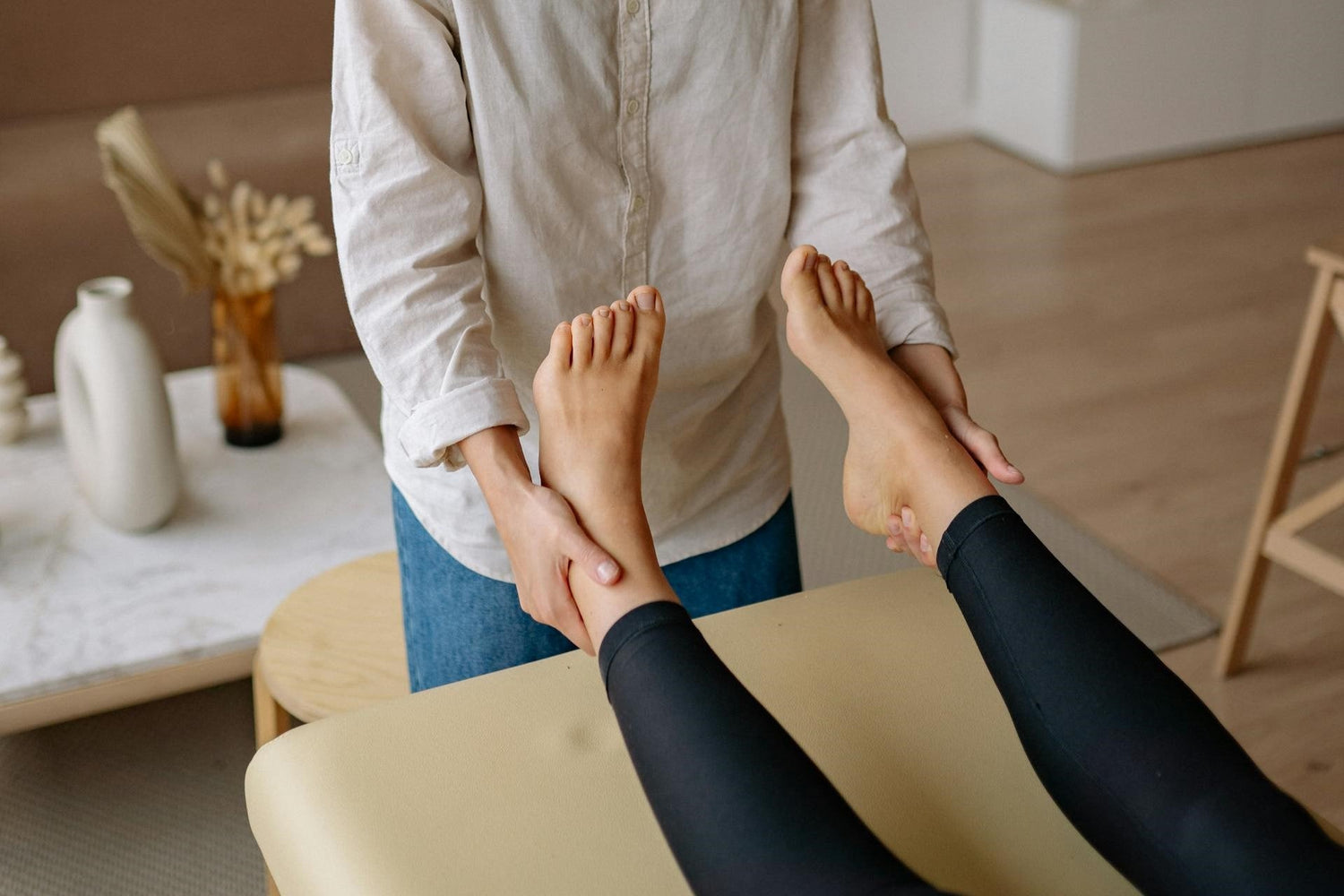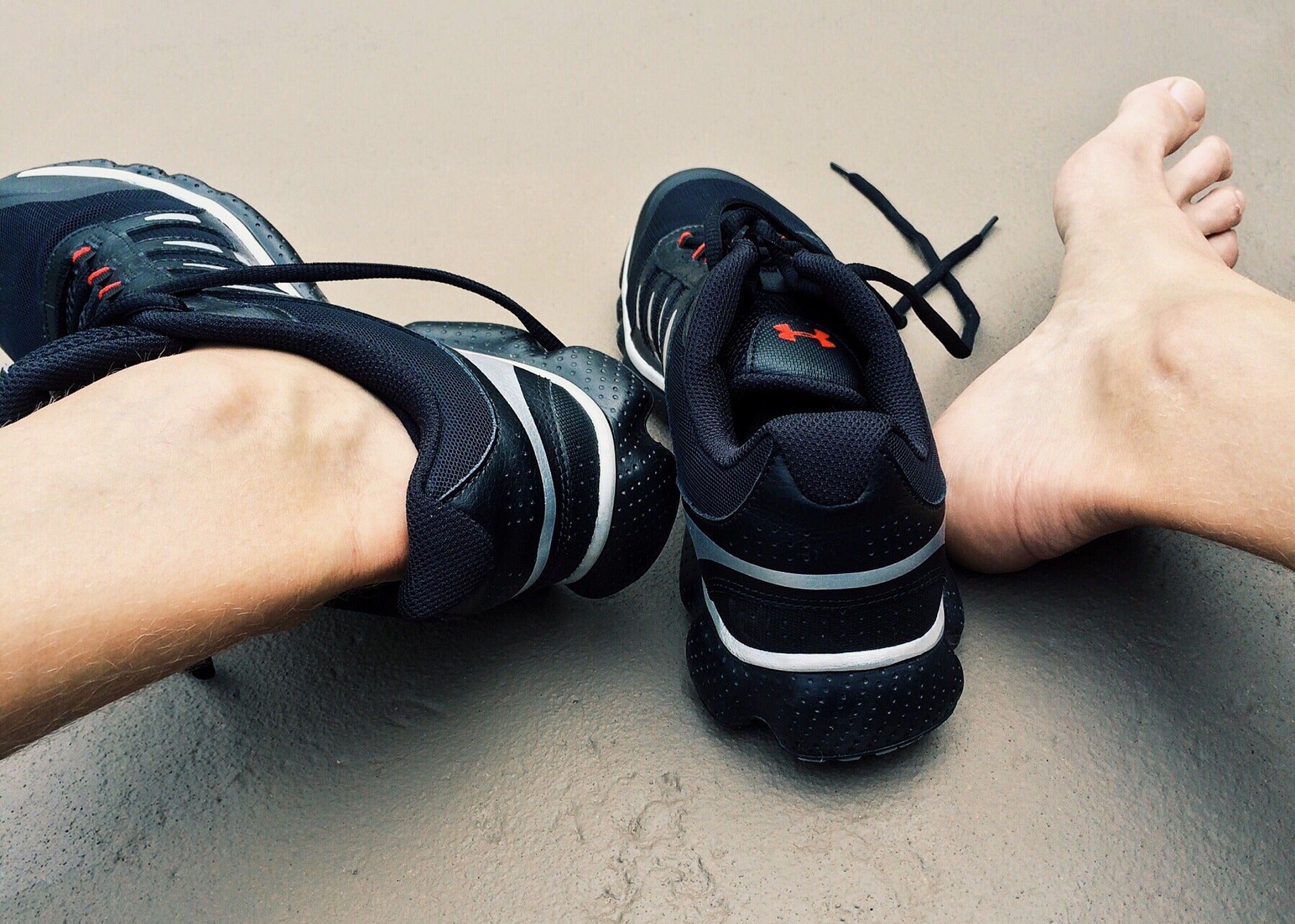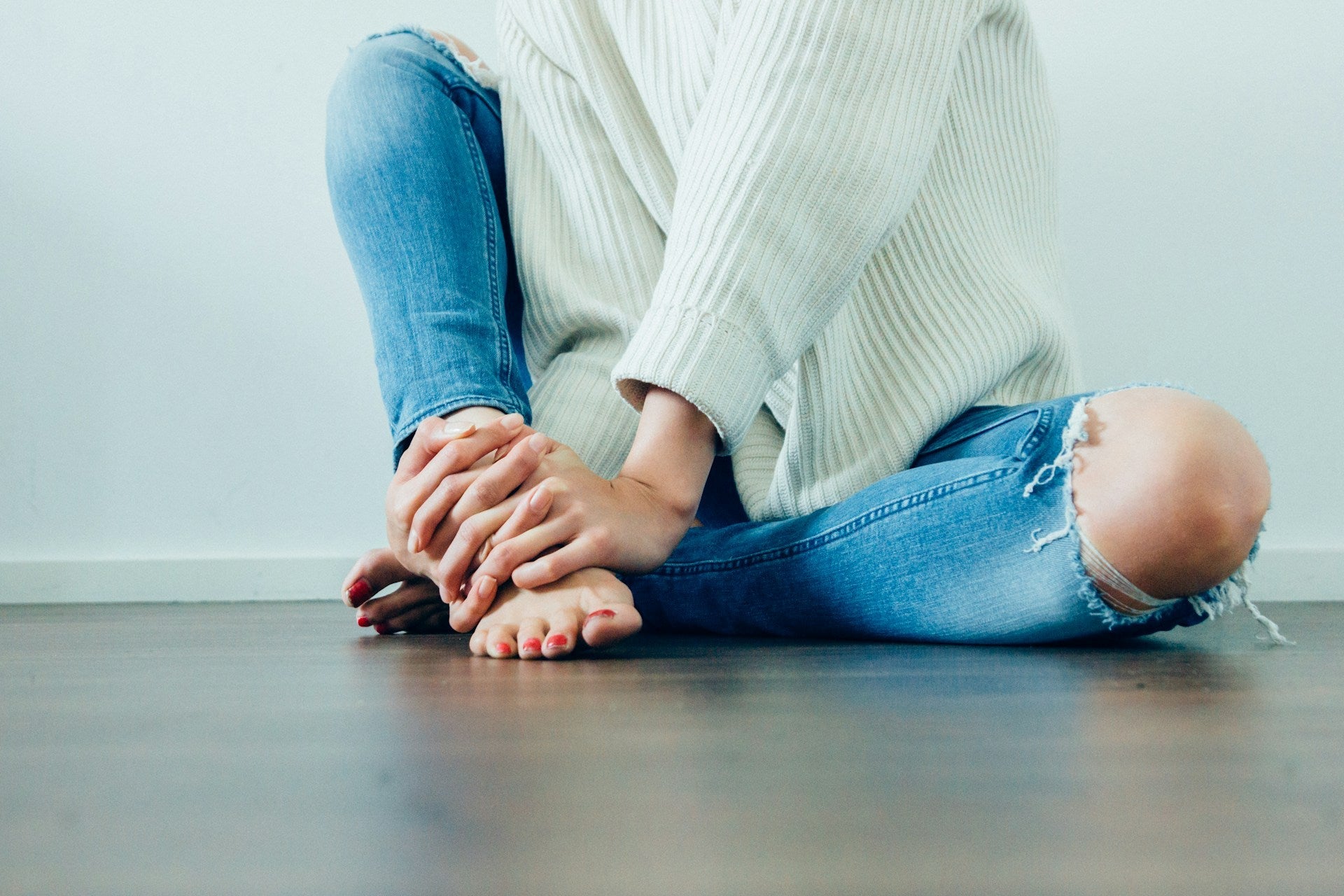As you get older, you might spend more time thinking about your balance, posture, and stability. After all, our bodies change over time — and on top of feeling a bit creakier each morning, you might have noticed that your balance and mobility aren’t what they used to be.
Of course, exercise is one of the most effective ways to support your mobility and balance with age. But did you know that studies suggest that foot massage could also be helpful?
Below, we’ll dive into the details on foot massage for balance and mobility, including the research so far, safety tips, and the best ways to add massage to your daily routine.
The Importance of Balance and Mobility
Having good balance and mobility involves sensory awareness, muscle strength, and healthy vision and vestibular systems. Balance refers to being able to keep your weight centered at your base, and mobility refers to your ability to move around freely. Stability is also important, since it means being able to control your movement while in motion.
All of these senses are key no matter how old you are — but they can be even more crucial as you get older. According to UCLA Health, our sense of balance starts to decline as young as age 50 — and it continues to decrease each decade after that.
Good balance and mobility don’t just mean being able to move comfortably, but they also keep you safe as you get older. And for people 65 and up, these senses are especially important for preventing falls and injuries.
Why Does Our Balance and Mobility Change With Age?
There are many reasons our mobility and balance can change over time. For example, years of wear and tear on your feet might make it harder for you to move around, and vision or hearing changes could make it feel more challenging to keep your balance.
But to be more specific, your balance and mobility can be affected by:
Sensory and Motor Changes
Did you know that your inner ear plays a crucial role in your balance? It’s because of your vestibular system — a set of structures situated in the inner ear that help give your body a sense of equilibrium. This system can be affected by medications, health conditions, and other age-related changes, which can impact your balance and stability.
Other senses can play a role in balance and mobility, too. For example, our vision affects our sense of bodily awareness, and our tactile system (or touch) can become less sensitive over time.
Sometimes, shifts in these senses can be linked to neurological or other health conditions. For this reason, it’s always important to see your doctor if you notice changes in your senses that affect your balance or come with other symptoms.
Musculoskeletal Health
Our musculoskeletal systems play a big role in our ability to move around freely. But our muscles start to weaken as early as 30 years old — and this loss in strength and mass is estimated to decrease at a rate of 3-8% per decade after that.
In addition, aging can naturally lead to smaller and fewer muscle fibers, and can make it harder to bounce back after exercise or vigorous activity. And collectively, these factors can all take a toll on your mobility.
The Surprising Benefits of Foot Massage for Balance & Mobility

Massage is a natural, complementary therapy that can bring many benefits to our well-being — and these effects can extend to our balance and mobility.
In an article from the American Massage Therapy Association, Jeffrey Forman, Ph.D., talks about the connection between balance and the lower body. As someone who led workshops on massage and exercise techniques to promote healthy stability, he said, “It all starts from the feet, and it moves up the kinetic chain.”
But what specific benefits can massage bring for balance and mobility? In short, it may help with:
- Soreness and muscle tension relief in achy feet or ankles.
- Supporting a healthy range of motion by soothing stiff muscles around the joints.
- Helping you relax and recover from physical and mental fatigue, which can also affect the way you move.
- Promoting the overall health of your feet, ankles, and lower legs.
Research on Massage for Balance and Mobility
For years, experts around the world have been curious to see exactly how massage can affect balance, stability, and mobility. And while research is still ongoing, there have been some promising studies so far.
Plantar Fasciitis Massage
In a 2017 study from Physiotherapy Theory and Practice, researchers looked at the effects of plantar fasciitis massage on 38 patients with type 2 diabetes.
The massage technique included a combination of classic, relaxing foot massage with cross friction — a method that focuses on massaging across tendons and muscle fibers. They then tested how the massage impacted the participants’ mobility, reach, and balance through a few tests, including a one-leg standing test.
After the massage, the results showed significant improvements in the participants’ balance and mobility. And although the study had the limitation of not having a control group, these results were surprisingly positive.
Thai Foot Massage for Balance and Range of Motion
In another study on foot massage and balance, researchers looked at Thai foot massage — an energizing technique similar to acupressure. They gathered 60 diabetic participants with peripheral neuropathy, and split them up into two groups:
- The experimental group received Thai massage for 30 minutes, three days a week for two weeks.
- Those in the control group received health education on foot self-care and were instructed to practice daily foot exercises that involved ankle flexion and dorsiflexion. To keep things as consistent as possible, they dedicated the same amount of time to foot care each week as the first group spent receiving massages.
Remarkably, the results showed that both groups felt a boost in balance, foot sensation, and range of motion after the two weeks. The Thai massage group also had slightly better results in the Timed Up & Go (TUG) test, which is often used to assess mobility in older adults.
Full Body Massage and Mobility
While not focused solely on foot massage, another small 2012 study looked at whether full-body massage could be helpful for older people’s mobility and stability.
Thirty-five healthy, older adults volunteered for the study. Each volunteer in the first group received a 60-minute full body massage, while the control group rested quietly in another room.
The participants were then tested for stability (and a few other factors) right away, 20 minutes later, and 60 minutes after their sessions.
The results? In short, massage didn’t seem to affect balance much right after the session. But in the 60 minutes following, the massage group had better measures of stability over time compared to the control group.
How To Integrate Foot Massage for Balance Into Your Routine
If you’re interested in foot massage for balance and mobility, here are a few easy ways to give it a try:
Using Your Hands or Asking a Partner
The great thing about massage is that it’s relatively easy to try at home — especially on muscles that are within reach, like in the feet or calves. Whether doing it by yourself or with a partner, you can use techniques like:
- Knuckle glides, which involve sweeping the knuckles along the bottoms of the feet with moderate pressure.
- Kneading, which uses light-to-moderate squeezing motions to boost blood flow, break up tension, and warm up the muscles
- Arch twists, which involve alternating outward thumb motions on the arches of the feet.
- Thumb work, which uses focused, circular motions to work out specific areas of tension.
Self-Massage Tools
Another excellent way to add foot massage to your routine is to try foot massage tools. Of course, these can sometimes be an investment, with prices ranging from a couple of dollars to a few hundred. But ultimately, you don’t need to spend a fortune to get a good quality foot massage at home.
Whether you’re looking to manually roll out tense muscles or relax during a completely passive massage, here are two good options to consider:
Rolling Massage Tools
Some of the best foot massage tools out there are also the simplest. A tennis ball is a go-to option for kneading out tension after a long day, and it can also be a soothing, semi-passive technique to try while you’re relaxing on the couch. (You could also use a small foam roller to get a similar effect.)
Simply place the ball or roller under your foot, apply moderate pressure, and roll out tension for a few minutes per foot, up to a few times a day.
Oscillating Massagers
Home foot massagers have boomed in popularity over the past few years, and for good reason. If you’ve found yourself focusing more on foot care as you get older, a high-quality foot massager can help you:
- Support the health of your feet, ankles, and lower legs
- Manage daily tension or soreness
- Relax and absorb the benefits of foot massage without doing any manual work
At the same time, these tools can be an investment — which means it’s important to choose a reputable brand when you buy. As you browse, it’s always great to check out reviews, see how long a company has been around, and look into whether they’re trusted by physicians.
Tips Before Trying Foot Massage
Like any complementary therapy, it’s important to use massage alongside other prescribed health routines or treatments you have — and not in place of them. And if you have a specific condition that affects your balance and mobility, you’ll also want to check with a doctor first to make sure that massage is a good fit for you.
With that in mind, here are some steps you can take to ensure you stay safe while getting started:
- Check with your doctor about any underlying conditions or medications you’re taking. For example, you’ll want to get the OK if you have kidney disease, heart issues, high blood pressure, cancer, or a history of blood clots.
- Avoid massaging acute, recent injuries, like bruises, strains, or tears.
- Whenever you get a massage, be sure to listen to your body’s cues for pain or discomfort.
- If you want expert help from a massage therapist but aren’t sure where to start, try asking for a referral from a doctor or physical therapist.
Other Ways To Stay Balanced and Agile With Age

Regular foot massage is one way to support your balance, senses, and mobility with age. But for more ways to strengthen your muscles and boost your brain-body coordination, here are a few other steps you can take:
Balance Training
Balance training can help strengthen and stabilize core muscles, all while increasing your proprioception — aka the ability to sense how your body moves, and where it is relative to your surroundings. It also boosts your intuitive sense of how your muscles work together to keep you stable.
These kinds of exercises can range in difficulty, and older adults or those with significant balance challenges should work with a professional, use support, and start with easy movements at first.
Technically, walking and generally staying active can both help train your balance. But some more specific exercises include:
Single-Leg Stance
The single-leg stance is one of the easiest, most straightforward balance training exercises out there. To try it:
- Stand next to a chair, wall, or other sturdy object to use for support.
- Lift one leg, and raise it behind you.
- Try to hold the pose for 30 seconds. (Feel free to lean onto your support object as needed.)
- Repeat with the other leg.
Rock the Boat (Weight Shifts)
For this exercise, you’ll also want to stand near a support object, like a chair or wall. Then:
- Lift one leg out to the side, and hold for 5-10 seconds.
- Bring the leg back into your starting stance.
- Immediately repeat the movement with the other side.
- Repeat for 6-10 reps, or more if you’d like.
Resistance Training
Resistance training means challenging your muscles against some form of resistance — whether it be a workout band, free weight, weight machine, or even your own body weight.
By doing resistance training two to three times per week, you can strengthen and improve the muscles that give you stability in everyday life, like your abs, glutes, quads, calves, and all of the smaller muscles in your feet and ankles.
Yoga or Tai Chi
Yoga and tai chi are two forms of stretch-focused exercises that can be great for people of almost all ages. Tai chi is the easiest of the two, but both can help you work on your mobility and balance.
That being said, there are a few key differences between these two activities. Specifically:
- Tai chi is a gentler, continuous movement that involves shifting your weight from side to side while moving your arms in fluid motions. Because tai chi is so beginner-friendly, it can be the better option for seniors wanting to improve stability and gain more confidence in their bodies.
- Yoga involves static and dynamic poses that tend to be more challenging than tai chi. It helps to strengthen the core, arms, and legs, and improve range of motion and flexibility.
Get Your Balance and Mobility Assessed
One final way to support your balance and mobility is to talk to your doctor about any concerns you might have. Not only can they help you address any health conditions, but they can also refer you to a physical therapist for an assessment.
A physical therapist can help assess your balance and mobility — including your strength, gait, muscle imbalances, and range of motion. From there, they can help you build an action plan of stretches, exercises, and other steps you can take to stay mobile.
The Bottom Line
As we get older, our balance and mobility can shift due to changes in our muscles, tendons, and senses. Luckily, foot massage can be an excellent way to support your brain-body connection, range of motion, and mobility overall.
If you’ve been worried about balance and mobility lately, the next best step is to talk to a physical therapist or doctor. They can help you identify any underlying health conditions, find ways to improve your stability, and answer any questions you might have about natural tools like foot massage.
Quality Foot Massage at Home
Ready to get started with restorative foot massage in the comfort of your home? Check out the MedMassager Foot Massager Plus today, or explore all of its uses and techniques here.



